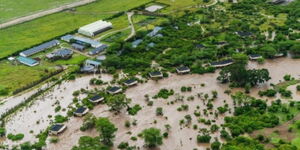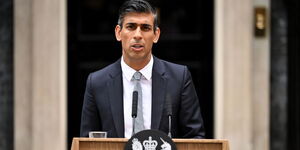The Central Bank of Kenya (CBK) in the Kenya Green Finance Taxonomy (KGFT) draft report has revealed a plan by the government to acquire eco-friendly buildings as part of the goal towards a sustainable environment.
This is one of the nine-point plans touching on different sectors the government seeks to achieve.
Under this, the government is targeting buildings designed to minimise energy use and carbon emissions throughout the lifecycle instead of lower-performing ones.
"The acquisition of buildings designed to minimise energy use and carbon emissions during the use phase can already make an important contribution by directing users towards high-performing properties and by sending signals to markets about the need to lift the overall energy performance of the whole stock," read part of the draft.
According to the draft, when it comes to large non-residential buildings an additional requirement will be introduced to ensure that these buildings are operated efficiently and that actual energy and carbon savings are delivered each year.
However such buildings will need to have an effective rated output for heating systems or systems for combined heating, ventilation and cooling over 290KW or a floor area over 1,000 meter squares.
The government will however not acquire such buildings for extraction, storage, transportation or manufacture of fossil fuels.
Some of the eligible buildings will have certifications or meet regulations and standards as provided by a relevant third-party verification body.
Still on metrics, the draft highlights that buildings built before December 31, 2020, will need at least an Energy Performance Certificate (EPC) class A.
The standards for the buildings erected after the said date are yet to be revealed.
"Where the building is a large non-residential building (with an effective rated output for heating systems, systems for combined space heating and ventilation, air-conditioning systems or systems for combined air-conditioning and ventilation of over 290 kW) it is efficiently operated through energy performance monitoring and assessment," reads part of the draft.
Also, the government shall not acquire a building which is built on protected natural areas such as land designated as Natura 2000, UNESCO World Heritage and Critical Biodiversity Areas (CBAs), or equivalent as defined by UNESCO and/or the International Union for Conservation of Nature (IUCN) under the following categories; strict nature reserve, wilderness area and national park.
Also, any building which is associated as a supporting infrastructure to the protected natural areas such as visitor centres, museums or technical facilities is exempted from this criterion.
The building must also not be built on arable or greenfield land or recognised high biodiversity value and land that serves as the habitat of endangered species listed on the IUCN red list.
"At least 80% of all timber products used in the new construction for structures, cladding and finishes must have been either recycled/reused or sourced from sustainably managed forests as certified by third-party certification audits performed by accredited certification bodies," reads the draft in parts.
Besides buying, the government will also build and renovate buildings which will be designed to minimise energy use and carbon emissions.












